warspite1
Posts: 41353
Joined: 2/2/2008
From: England
Status: offline

|
quote:
ORIGINAL: Froonp
quote:
I intend to use the amphibious counters for LCA, LCI and LCT and the transport counters for LSI and LST.
I do not agree with you Warspite1.
I think that all of those you cited represent the AMPH.
LCA : Landing Craft Assault (http://en.wikipedia.org/wiki/Landing_Craft_Assault)
LCI : Landing Craft, Infantry (http://en.wikipedia.org/wiki/Landing_Craft%2C_Infantry)
LCT : Landing craft tank (http://en.wikipedia.org/wiki/Landing_craft_tank)
LSI : Landing Ship, Infantry (http://en.wikipedia.org/wiki/Landing_Ship%2C_Infantry)
LST : Landing Ship, Tank (http://en.wikipedia.org/wiki/Landing_Ship%2C_Tank)
All these are for invasions.
For me, all of these are represented by the AMPHs. All of these are capable of loading & unloading troops directly from the shore, which is exactly what an AMPH is made to do. A TRS needs a port, or an HQ acting like a temporary port facility. One could say that AMPH can't load ARM units, but I would reply that there are Tanks in all military formations, including INF, so LCT and LST are needed even for INF troops.
IMO, the TRS are simply represented by civilian or ex-civilian merchantships used by the military to transport troops & crated planes.
This is supported by the figures of the International shipping capacities of 1939 (in million tons) that are very close to those you obtain when you calculate the CP + TRS available at startup (I had discussed that with Harry a long time ago to know the rationale for the number of CP and the number of TRS at setup, especially for Minor Countries).
For example,
- the USA start the game with 27 CP and 4 TRS, which convert to (27/6)+4 = 8,5 millions of tons of shipping. John Ellis' WW2 databook p249 say that they began the war with 8,9 million tons of shipping.
- the Netherlands start the game with 10 CP and 1 TRS, which convert to (10/6)+1 = 2,7 millions of tons of shipping. John Ellis' WW2 databook p249 say that they began the war with 3,0 million tons of shipping.
- Japan start the game with 20 CP and 3 TRS, which convert to (20/6)+3 = 6,7 millions of tons of shipping. John Ellis' WW2 databook p249 say that they began the war with 6,0 million tons of shipping.
- Norway start the game with 13 CP and 2 TRS, which convert to (13/6)+2 = 4,2 millions of tons of shipping. John Ellis' WW2 databook p249 say that they began the war with 4,8 million tons of shipping.
- Italy start the game with 7 CP and 2 TRS, which convert to (7/6)+2 = 3,2 millions of tons of shipping. John Ellis' WW2 databook p249 say that they began the war with 3,4 million tons of shipping.
- Denmark start the game with 6 CP and 0 TRS, which convert to (6/6)+0 = 1 millions of tons of shipping. John Ellis' WW2 databook p249 say that they began the war with 1,2 million tons of shipping.
As we can see by looking at these numbers, we see that CP and TRS are all acounted for in the same category of "Merchant shipping". CP are dedicaced to transporting resources and BP, and TRS to transport combat units. There even was a rule in an old WiF edition that allowed to convert one into the other, at the expense of loss of capacity due to the conversion.
Warspite1
Thanks Patrice and Sabre for the feedback - as I said this is a first stab at what is a relatively obsure subject in terms of WWII history.
However, the distinction I have tried to make is between those vessels that have the ability to actually take the troops and equipment overseas - the trs - and having got there, those vessels that land the combat teams - the Amphs. For example, I cannot imagine the Royal Ulsterman getting anywhere close to the shore but the craft she carried were designed exactly for that. Equally I accept that the Amphs are not going to do much over long distances (Torch) without "motherships" like Royal Ulsterman. So there is an argument for including the "mothership" in the Amphs but this was not my preferred route.
The reason is that if I take this latter approach there is tons to write about the Amphs and in my view very little to write about the trs - apart from the Queens which have there own counter - which is why I have sought to split them out. The everyday trs ship - whilst vital - do not make for interesting reading. There is also the fact that things evolved over time. I do not know this but I doubt the Royal Ulsterman carried Landing Craft for the Norwegian operation? If not then she would be a trs at that time.
|
 Printable Version
Printable Version





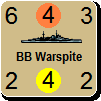
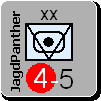
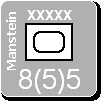
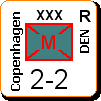
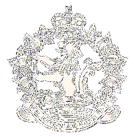

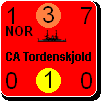

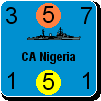

 !! Surely she deserves a 10
!! Surely she deserves a 10
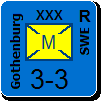
 New Messages
New Messages No New Messages
No New Messages Hot Topic w/ New Messages
Hot Topic w/ New Messages Hot Topic w/o New Messages
Hot Topic w/o New Messages Locked w/ New Messages
Locked w/ New Messages Locked w/o New Messages
Locked w/o New Messages Post New Thread
Post New Thread